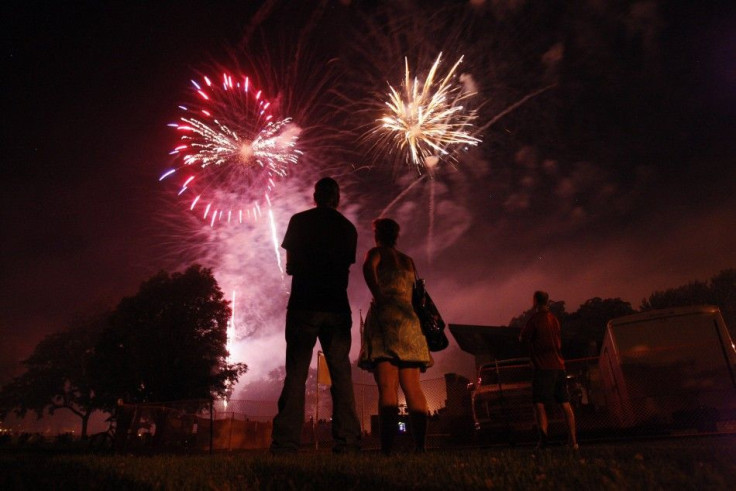Fireworks Eye Injuries Caused By Shrapnel, Not Blasts

(Reuters Health) - Just in time for July 4th, a U.S. study shows for the first time how fireworks can damage eyeballs.
There are more than 2,000 eye injuries from fireworks every year in the United States, most occurring during Independence Day celebrations, but the exact mechanism behind the injuries had escaped researchers until now.
Some had argued it takes flying shrapnel to make eyes bleed or rupture, while others thought pressure waves from the explosion itself are enough - in which case safety goggles might not offer adequate protection.
Scientists found that blast waves from explosions mimicking commercial firecrackers, even at short distances, were too feeble to make an eyeball burst. They conducted the tests on eyes taken from human cadavers and published the results on Tuesday in the Journal of the American Medical Association bit.ly/MvXYT6.
This for the first time scientifically proves you have to have the impact from an object such as a bottle rocket to cause serious eye injuries, said Stefan Duma, who heads the Virginia Tech-Wake Forest University School of Biomedical Engineering and Sciences. Duma, who led the new research, said he is a big fan of fireworks.
If you remove the projectile, you dramatically reduce the risk, he told Reuters Health.
For the study, his team used human eyes from an eye bank in North Carolina.
We put instrumentation into the eye, said Duma, who has spent two decades developing techniques to measure eye injuries. Then we detonate charges at various distances from the eye.
Even at less than three inches, the researchers found, the blast damage to the eye was limited to surface scratches - called corneal abrasions - which usually heal on their own.
The scratches got bigger the closer to the eye the explosion took place, and high-speed videos showed they were caused by unspent gunpowder flung onto the eyeball by the blast.
Dr. Terrence O'Brien from the Bascom Palmer Eye Institute at the University of Miami said he has seen eye injuries from fireworks ranging from minor abrasions to complete loss of an eye.
Of the 2,000 injuries every Fourth of July, the vast majority are in young adults and children, O'Brien told Reuters Health. It's ironic that while celebrating our independence they lose their visual independence due to sight-threatening injuries.
He welcomes the new results, adding that they should help guide policy decisions on fireworks safety. Still, he pointed out that the study has some significant limitations, including that it was done in dead tissue.
We have to understand, this is a somewhat contrived experiment, he cautioned. In the real world, it's not as controlled as this.
For instance, although Duma and his colleagues used charges similar to what are found in commercial firecrackers, a lot of real-life injuries are from homemade fireworks, which may be more powerful, O'Brien said.
Certainly we don't want to ground fireworks, but they should be carried out by professionals, O'Brien said.
For those who prefer the hands-on approach, added Duma, who has his own remote-controlled launchers ready, first and foremost you have to have parental supervision. If possible, having safety glasses would be the best thing. It's important to have kids wearing these from a very young age.
(Editing by Genevra Pittman, Michele Gershberg and Kenneth Barry)
© Copyright Thomson Reuters 2024. All rights reserved.











